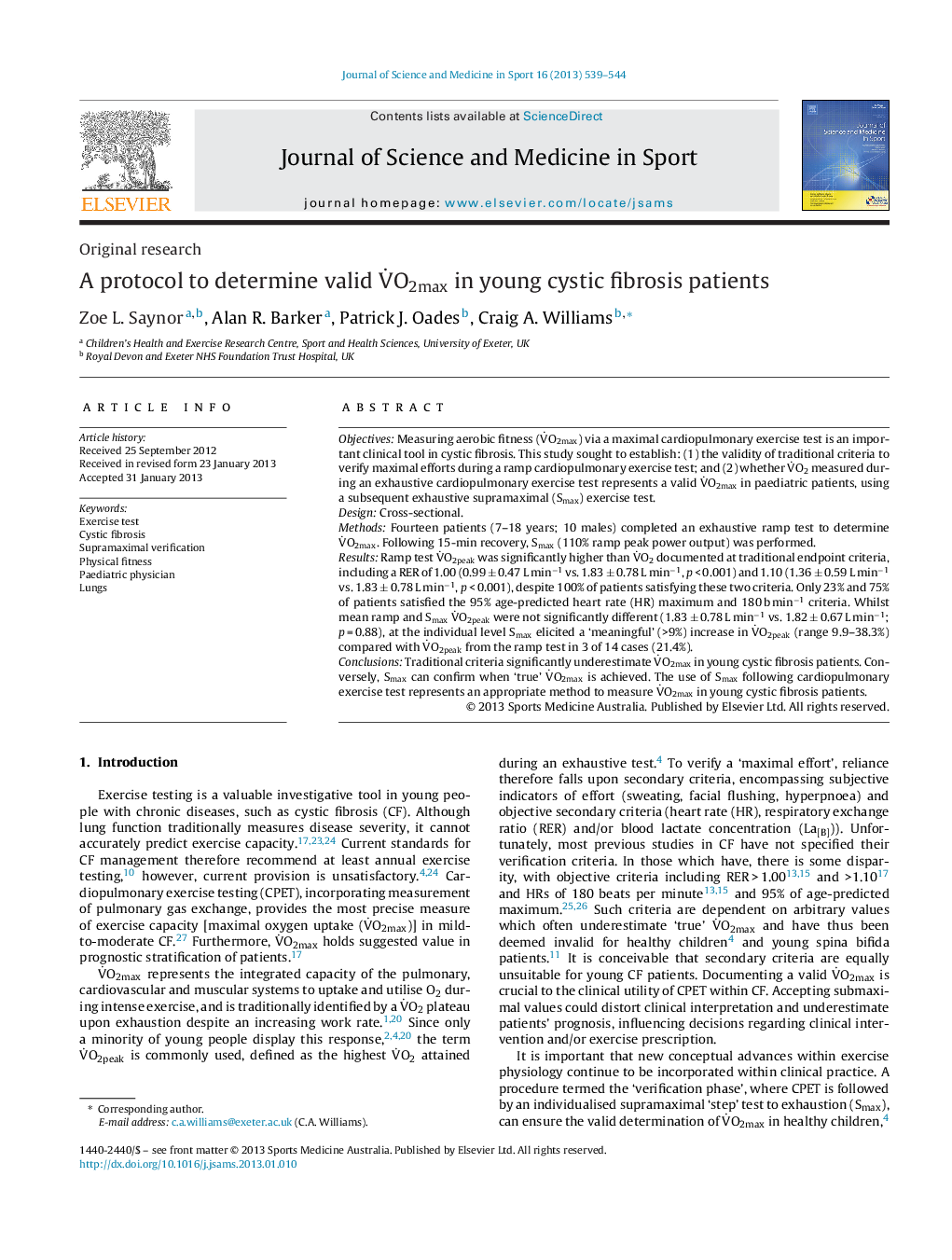| Article ID | Journal | Published Year | Pages | File Type |
|---|---|---|---|---|
| 2702858 | Journal of Science and Medicine in Sport | 2013 | 6 Pages |
ObjectivesMeasuring aerobic fitness (V˙O2max) via a maximal cardiopulmonary exercise test is an important clinical tool in cystic fibrosis. This study sought to establish: (1) the validity of traditional criteria to verify maximal efforts during a ramp cardiopulmonary exercise test; and (2) whether V˙O2 measured during an exhaustive cardiopulmonary exercise test represents a valid V˙O2max in paediatric patients, using a subsequent exhaustive supramaximal (Smax) exercise test.DesignCross-sectional.MethodsFourteen patients (7–18 years; 10 males) completed an exhaustive ramp test to determine V˙O2max. Following 15-min recovery, Smax (110% ramp peak power output) was performed.ResultsRamp test V˙O2peak was significantly higher than V˙O2 documented at traditional endpoint criteria, including a RER of 1.00 (0.99 ± 0.47 L min−1 vs. 1.83 ± 0.78 L min−1, p < 0.001) and 1.10 (1.36 ± 0.59 L min−1 vs. 1.83 ± 0.78 L min−1, p < 0.001), despite 100% of patients satisfying these two criteria. Only 23% and 75% of patients satisfied the 95% age-predicted heart rate (HR) maximum and 180 b min−1 criteria. Whilst mean ramp and SmaxV˙O2peak were not significantly different (1.83 ± 0.78 L min−1 vs. 1.82 ± 0.67 L min−1; p = 0.88), at the individual level Smax elicited a ‘meaningful’ (>9%) increase in V˙O2peak (range 9.9–38.3%) compared with V˙O2peak from the ramp test in 3 of 14 cases (21.4%).ConclusionsTraditional criteria significantly underestimate V˙O2max in young cystic fibrosis patients. Conversely, Smax can confirm when ‘true’ V˙O2max is achieved. The use of Smax following cardiopulmonary exercise test represents an appropriate method to measure V˙O2max in young cystic fibrosis patients.
